Results 9,221 to 9,230 of 12096
Thread: Anandtech News
-
02-28-19, 01:18 PM #9221
Anandtech: A 32 MP Selfie Camera on ZTE's Blade V10: Because You Love Yourself
The imaging capabilities of mobile phones’ primary cameras have come a long way since the early 2000s, when the first camera phones hit the market. Today premium handsets can offer picture quality in line with higher-end digital cameras, to the point where even some DSLRs are threatened. Meanwhile, selfie cameras have usually been behind the curve as far as resolution and lenses are concerned, owing to their more limited use cases. However it would seem that ZTE has decided to change this with its Blade V10 smartphone.
The new handset from ZTE features a 32 MP selfie camera using a display flash to capture all the beauty of its owner without any pixel or atom of the anatomy missed. The company does not disclose optics it pairs with the advanced sensor for some reason. Meanwhile, the main camera comprises of a 16 MP (f/1.8, 1.12µm) RGB module, a 5 MP (f/2.4) depth sensor, and a dual-LED dual-tone flash.
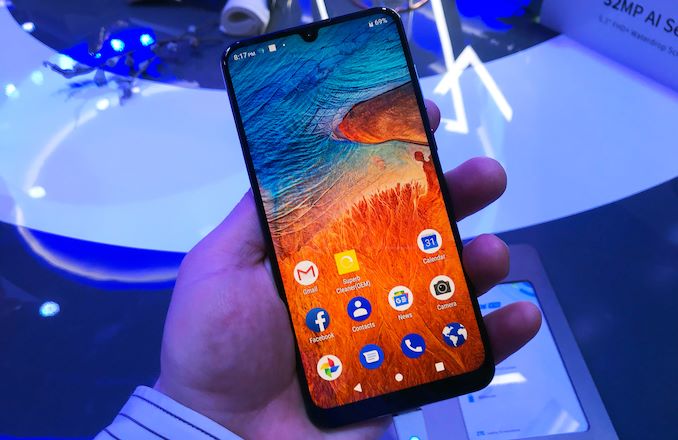
With the 32 MP selfie camera being the key element of the device, ZTE is not really emphasizing the other characteristics of the handset. The ZTE Blade V10 looks rather advanced in general; the smartphone has 6.3-inch IPS display with a 2280x1080 resolution (400 PPI), and is powered by MediaTek’s P70 SoC (four ARM Cortex-A73, four ARM Cortex-A53, Mali-G72, Tensilica DSP/NSU, LTE Cat13/Cat7, etc.) accompanied by 3 or 4 GB of RAM, 64 or 128 GB of NAND flash storage, and a 3,200-mAh battery.
When it comes to general communication capabilities of the device, they are in line with mainstream smartphones of today: 4G/LTE, 802.11ac Wi-Fi, Bluetooth 4.2, USB 2.0 Type-C for data/charging, and so on.
ZTE says that the Blade V10 will be available in black, blue, and green, sometime in March. The phone will be sold in APAC, EMEA, and Latin America regions at a price of around $300.
Related Reading:
- Nubia X: a Dual-Display Smartphone with No Selfie Camera
- Nokia Launches Nokia 9 PureView at MWC 2019: So I Heard You Like Cameras
- MWC 2018: ZTE Blade v9 Live Blog (3pm UTC, 10am ET)
Source: ZTE
More...
-
02-28-19, 01:18 PM #9222
Anandtech: Micron Announces 1300 Client SATA SSD With 96L TLC
Micron's line of client SATA SSDs for the OEM market is making the jump to 96-layer 3D TLC NAND flash memory with the new Micron 1300 SSD. This replaces the Micron 1100 SSD, which used Micron's first-generation 32-layer 3D TLC.
The Micron 1100 was very similar to the Crucial MX300 consumer/retail SATA drive, but since then the two product lines have diverged. The Crucial MX series switched over to using Silicon Motion controllers with the MX500, featuring 64L 3D TLC. The Micron 1100 stuck around and occasionally made an impact on the retail market as a cheaper alternative available through grey-market resellers.
The Micron 1300 leapfrogs the Crucial MX series by adopting 96L TLC, but otherwise little has changed from the 1100 series—it's still using Marvell controllers and provides the same feature set including optional TCG Opal encryption support and partial power loss protection.
Since there's hardly any room for performance improvement behind a 6Gbps SATA link, Micron is primarily touting improved pricing and power efficiency for the 1300 SSD, though neither is quantified all that well by their press release. We found Micron's 32L 3D NAND to be consistently one of the slowest 3D flash memories ever shipped, so it's likely that the Micron 1300 with 96L NAND does provide a boost to performance at low queue depths even if the peak performance is largely unchanged.Micron 1300 SSD Specifications Capacity 256 GB 512 GB 1 TB
(1024 GB)2 TB Controller Marvell 88SS1074 NAND Flash Micron 96L 3D TLC Form-Factor, Interface 2.5" or M.2 2280 SATA 2.5" SATA Sequential Read 530 MB/s Sequential Write 520 MB/s Random Read 58k IOPS 90k IOPS Random Write 87k IOPS Warranty 5 years Write Endurance 180 TB
0.39 DWPD300 TB
0.32 DWPD400 TB
0.22 DWPD400 TB
0.11 DWPD
The Micron 1300 does not expand the range of available capacities: up to 2TB for 2.5" drives, and up to 1TB for M.2 SATA drives. Micron's datacenter SATA drives have hit 8TB using the same Marvell controllers, but the mainstream client SSD market doesn't have much demand for 4TB or 8TB drives yet.
The write endurance ratings at the higher capacities are rather disappointing, with both 1TB and 2TB models rated for the same 400TB total endurance. Micron is reportedly already selling 96L TLC in the recently introduced 960GB Crucial BX500, so they shouldn't need to use the 1300 to unload low-grade 96L NAND. Instead, it seems the low endurance ratings are simply due to a lack of market pressure, highlighting one of the ways that the OEM market differs from the consumer retail SSD market.
More...
-
03-01-19, 11:37 AM #9223
Anandtech: Nokia 9 PureView: Hands On, Impressions, Thoughts
HMD Global introduced its new top-of-the-range Nokia 9 PureView smartphone at Mobile World Congress earlier this week. The handset brings in a unique camera featuring six modules (five RGB and monochrome sensors, and Time-of-Light sensor) co-designed by Nokia, Light, and Zeiss, coupled with Nokia’s latest photography software. As the technology behind the phone was explained in our initial coverage, this piece will focus on design, comfort of use, and overall impressions about the handset.
More...
-
03-01-19, 11:37 AM #9224
Anandtech: Dive In: Catalyst Has Apple Watch Protection for Up to 100 Meters
When smartwatches emerged several years ago, they were good enough to work as pedometers or count calories burned when their owner used an elliptical strider. However they were not water-proof, so even as basic fitness trackers, they couldn't monitor you during activities like swimming. Modern smart watches have taken this a step further and can be used in pools, but they are still not protected enough for anything deeper. Fortunately, there is a company called Catalyst that has protective covers and cases for many devices, including deep diving with Apple Watch.
More...
-
03-04-19, 10:41 AM #9225
Anandtech: Pictured: Intel and Qualcomm to offer 5G Modules for M.2 Slots
Last week we reported on Fibocom, an Intel partner, had announced a new M.2 module featuring the Intel XMM8160 5G modem to be used in CPEs as well as upcoming PCs and laptops. During the Mobile World Congress show, we actually saw this M.2 module on the Fibocom booth, but to our surprise, we also saw a similar M.2 module for Qualcomm’s X55 modem over at the Qualcomm booth.
More...
-
03-04-19, 10:41 AM #9226
Anandtech: AnandTech Call for Writers: 2019
The Call for Writers is something of an annual tradition over here at AnandTech. As anyone who follows the site knows very well, the list of things we have to review/cover easily exceeds our available time. So the call for writers gives us a chance to find new talent and new opportunities to grow, be it into new coverage areas entirely or just covering more of the existing products our readers have come to enjoy over the years.
The ultimate purpose of the Call for Writers is to find new talent. To continue to grow and improve our content, we need your help. We're looking for writers with a true passion for the technology we cover, a deep understanding of what's out there and a thirst for more knowledge.
We're looking for contributors to help out both with reviews as well as our short to medium form Pipeline coverage. The areas in particular we're looking for help with are listed below:
- News/Pipeline
- Networking
- GPUs (US-only)
- Systems/Laptops (US-only)
- Mobile/Smartphones (US/Canada & Europe)
- Podcast Editor
- Memory
- Community Manager (US-only)
- Monitors
- Home Automation/IoT
- Professional Graphics/GPU
If you find yourself at the intersection of knowledge and passion about any of those areas, and have some time to contribute, you're exactly what we're looking for. These are paid, part-time positions that we're looking to fill, with most positions open on a world-wide basis, and certain positions primed for a quick promotion to full-time. What I need is a writing sample that demonstrates your ability to talk about any one of these topics. Your sample can be in the form of a review, a pipeline post or an analysis piece - it should be something that looks like it would fit in on AnandTech.
Once you've produced it, send it on over to callforwriters@anandtech.com. Please also include a description of what subject(s) you would be interested in writing about, and some basic information about your background and where you're located. We'll read through all samples, but we can't guarantee a reply due to the sheer volume of submissions we tend to receive. If we like what you've sent and there's a potential fit on the team, we'll be in touch.
I'll conclude this post with a passage from our About page:
In the early days of technology reporting on the web the focus was almost exclusively on depth. We had a new medium for content that didn't come with the same restrictions as more traditional forms. We could present as much data as we felt was necessary and we could do it quicker.If the above resonates with you and you'd like to help by being a part of something different, I'd encourage you to submit a writing sample.
As the web grew, so did the approach to gaining readership. In many cases, publishers learned from the tips and tricks of more traditional media to growing their audience. The focus shifted away from ultimate understanding of what was being reported, to producing content significantly motivated by increasing traffic, or revenue, or both. Thorough observations were out; sensationalism, link baiting, and the path to shallow 10-o'clock-news reporting were in.
While I believe it's definitely easier to produce content by going this route, I don't believe it's the only way to build a well read website.
Frequently Asked Questions
Q: How old do I need to be to work for AnandTech?
A: You need to be old enough to legally work in your country of residence without significant restriction. Otherwise we have no specific requirements so long as you can do the job well. Anand started the site at 14, after all...
Q: Do I need to be located in the United States to work for AnandTech?
A: Some positions do require that you be in the US for logistical reasons, and those specific positions are noted. However unless otherwise noted, most positions are open on a world-wide basis.
Q: Do I need to supply my own products for testing or contacts at companies? (i.e. do I need to be an insider?)
A: No. Assuming for the moment you have a computer to write on, then you already have the most important piece of equipment that you need. Meanwhile you will need some knowledge of the field at hand, but we will introduce you to the people you need to know for your position at AnandTech.
Q: Can I really work for AnandTech even though I don't have a Ph.D in electrical engineering?
A: Yes! We are first and foremost looking for people with a passion to learn, and the knack to make it happen. There's a certain degree of baseline knowledge needed for any given position, but if you can read existing AnandTech articles then you're already half-way there.
Q: Is there a submission deadline?
A: We have a tentative end point for the end of March
More...
-
03-04-19, 01:55 PM #9227
Anandtech: USB4 Specification Announced: 40 Gbps, Type-C, TB3 Support
The USB Promoter Group has announced the upcoming release of the USB4 specification. The new standard is based on Intel’s Thunderbolt protocol and supports a range of features, including data transfer rates of up to 40 Gbps, display interfaces, and power delivery. The detailed USB4 specification will be published in the middle of 2019.
The USB4 specification will be based on the Thunderbolt protocol that Intel has contributed to the USB Promoter Group. The new interface will use USB Type-C connectors and will maintain backwards compatibility with USB 2.0, USB 3.2, and Thunderbolt 3 interfaces. The maximum data transfer rate supported by the new USB4 interface is 40 Gbps over 40 Gbps-certified cables. Also, USB4 will support various display protocols, and power delivery.
The USB4 standard will be officially ratified in the middle of 2019. At present over 50 companies are actively participating in the final stages of development of the draft USB4 specification.
Based on what we know about the USB4 specification at this point, the new standard will use the Thunderbolt protocol, but it will not be exactly Thunderbolt 3 as its functionality will likely be different.
The contribution of the Thunderbolt 3 protocol to the USB Promoter Group essentially brings TB3 to mainstream PC platforms and enables various companies to integrate its support into their products. Meanwhile, Intel’s Ice Lake processors will be the first CPUs to support Thunderbolt 3 natively.USB Specifications USB 1.0 USB 2.0 USB 3.0 USB 3.1
Gen 2USB 3.2
Gen 2x2USB4 Alternative Branding - High Speed Super
SpeedSuper
Speed+Super
Speed+Super
Speed+Bandwidth 12 Mbps 480 Mbps 5 Gbps 10 Gbps 20 Gbps 40 Gbps Encoding 8b/10b 128b/132b Introduction 1996 2001 2011 2014 2017 2019
“Releasing the Thunderbolt protocol specification is a significant milestone for making today’s simplest and most versatile port available to everyone,” said Jason Ziller, General Manager, Client Connectivity Division at Intel. “By collaborating with the USB Promoter Group, we’re opening the doors for innovation across a wide range of devices and increasing compatibility to deliver better experiences to consumers.”
Related Reading- USB 3.2 at 20 Gb/s Coming to High-End Desktops This Year
- ASMedia Demos USB 3.2 Gen 2x2 PHY, USB 3.2 Controller Due in 2019
- USB 3.2 Update to Bring 20 Gbps Bandwidth: USB 3.1 Type-C Cables Compulsory
- Cosemi Launches USB 3.1 Gen 2 Hybrid Active Optical Cable: Up to 50 Meters of USB
- Cypress and Zhaoxin Have USB 3.1 Gen 2 USB Controllers
Sources: USB Promoter Group, Intel
More...
-
03-04-19, 05:03 PM #9228
Anandtech: Intel Announces The FPGA PAC N3000 for 5G Networks
One of last week’s early MWC 2019 announcements was Intel’s new FPGA PAC N3000 card. Intel’s networking business is something that the company has been focusing a lot of the last couple of years as it offers some interesting opportunities both to Intel as a supplier as well as to potential customers.
Intel’s new PAC solution represents a new tier among the company’s portfolio, aimed directly at telecom providers who have to deal with ever increasing data traffic. In particular Intel is marketing the need for such specialised (yet flexible) solutions to be able to cope with the transition to 5G.
Traditional solutions would have to rely either on software solutions, which many times is either too slow an inflexible, or on dedicated silicon hardware, which has high investment cost and a long lead time in terms of implementation. The new FPGA PAC N3000 aims at combining the benefits of both worlds, achieving much higher throughput than would be possible by software acceleration, all while being flexible enough for customers to deploy it easily and fast.
At the heart of the new card we find an Arria 10 GT1150 FPGA chip with 1.15 million logic elements, representing the tier SKU in Intel’s Arria lineup.
The memory configuration of the new PAC N3000 seems odd at first, as it’s listed at 9GB of DDR4. In fact what we’re dealing with here is a three-tier DRAM subsystem: the card has 8GB of 64-bit DDR4, 1GB of 16-bit DDR4 as well as 144MB of QDR IV memory. The rationale here is that the different memory hierarchies serve different workloads running on the card, with different tasks having their own optimised memory tiers, taking full advantage of various bandwidth and latency characteristics. Intel for example explains that the 1GB of 16-bit DDR4 represents a lower latency memory buffer than the full 8GB buffer, and the 144MB QDR buffer is even further latency optimised and specifically serves tasks such as hosting the QoS tables of the software stack.
Network connectivity is provided by two Intel Converged Network Adapter XL710’s which are integrated into the card, serviced by two QSFP connectors. This enables connectivity up to 100Gbps in either 8x10 or 4x25Gbps configurations.
We were able to get our hands on the card at Intel’s MWC 2019 booth, showcasing more details: The card is a single-slot, half-length board with a PCIe 3.0 x16 connector.
What is interesting is that the board itself is actually a multi-PCB design – unfortunately Intel wouldn’t let us remove the heat-sink or detail the innards, but it’s easy to envision that the upper PCB layer hosts the XL710 network card components while the main board is hosting the FPGA.
The back of the card looks eerily similar to a graphics card, and we can note Micron DDR4 chips arranged in a 4+1 configuration (64+16-bit channels).
Intel’s goal with the card is to offer network operators with a quick solution to their 5G network needs, offering a time and flexibility advantage over competing (possibly more integrated) solutions.
Related Reading:
- Arm Announces Neoverse N1 & E1 Platforms & CPUs: Enabling A Huge Jump In Infrastructure Performance
- Intel Datacenter Summit 2018 Live Blog
- LR-Link Launches Intel X550-Based 10 GbE NICs: Starting at $155
- Buffalo Unveils New 10GBase-T Network Card with 2.5G+5G
More...
-
03-05-19, 10:23 AM #9229
Anandtech: Hands-On with The Nubia Alpha: A Smartphone or A Smartwatch?
This year at Mobile World Congress, ZTE’s Nubia division introduced its Alpha, a wearable device that can serve both as smartphone and smartwatch. While initially dubbed as an Android-based wearable smartphone, the Nubia Alpha is actually an advanced smartwatch with a massive display that can make phone calls.
Based on the Android Wear 2.1 operating system, the Nubia Alpha is essentially a smartwatch coupled with a an oversized display and matching high-capacity battery. At 4-inches diagonal, the 960x192 pixel OLED display is so large that it actually wraps in an effort to contour the user's wrist. Meanwhile under the hood is traditional smartwatch fare, with Qualcomm's aging Snapdragon Wear 2100 SoC doing the heavy lifting. This is a four core ARM Cortex-A7 CPU plus Adreno 304 GPU setup, which is further paired with 1 GB of RAM and 8 GB NAND flash storage.
The device in its WWAN-enabled flavor supports 4G/LTE, 802.11n Wi-Fi, and Bluetooth 5.0 wireless connectivity. Meanwhile, there will also be a version without 4G/LTE connectivity. As for imaging capabilities, the Nubia Alpha has a 5 MP (f/2.2, 25mm) camera that can be used to control the device using gestures. The manufacturer says that the Nubia Alpha will work for up to 48 hours with its 500 mAh battery, which is in-line with other smartwatches available today.
Since the Nubia Alpha can make phone calls, ZTE has the option of positioning it as a smartphone. Though as the watch cannot browse the Internet or run applications that you expect from an Android-based handset – never mind the odd display resolution and aspect ratio – it's functionally closer to a super-powered smartphone and that's likely the route ZTE will go with it.
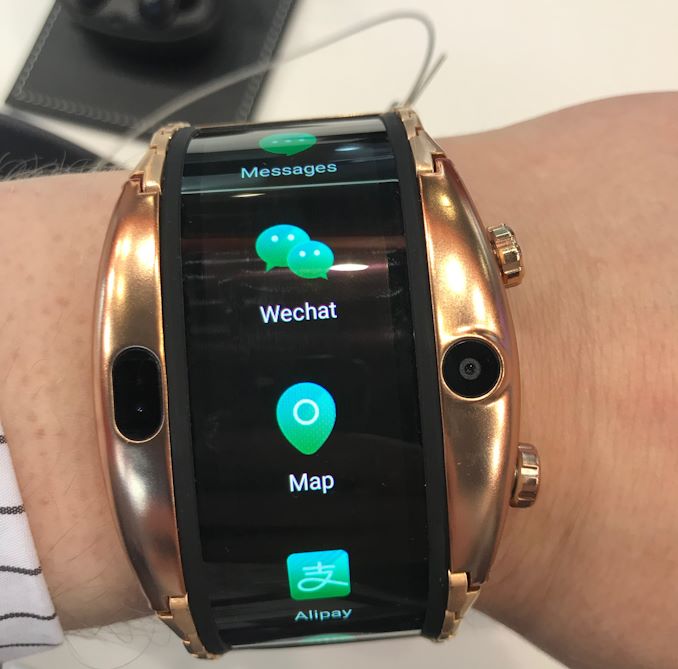
In the meantime, the Nubia Alpha is one of the most advanced smartwatch and fitness trackers available today because of its large display, gesture and voice-based controls, advanced sensors (accelerometer, gyroscope, heart rate), attractive design, IP67-rated protection against dust/water, and so on.
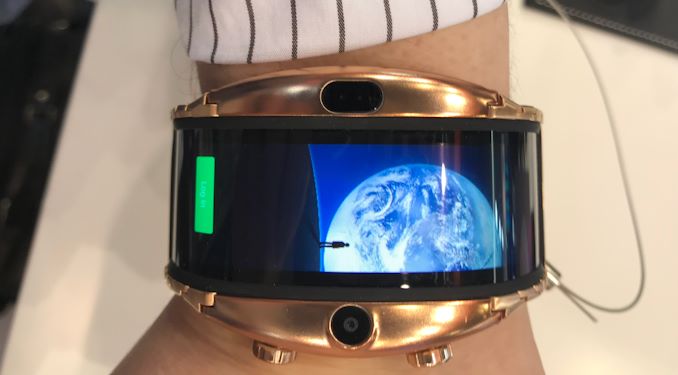
With a body made of stainless steel, the Nubia Alpha does look good. However this is a double-edged sword as the overall watch is quite big, and that may be considered as a disadvantage by many not only because of the dimensions, but also because of the weight.
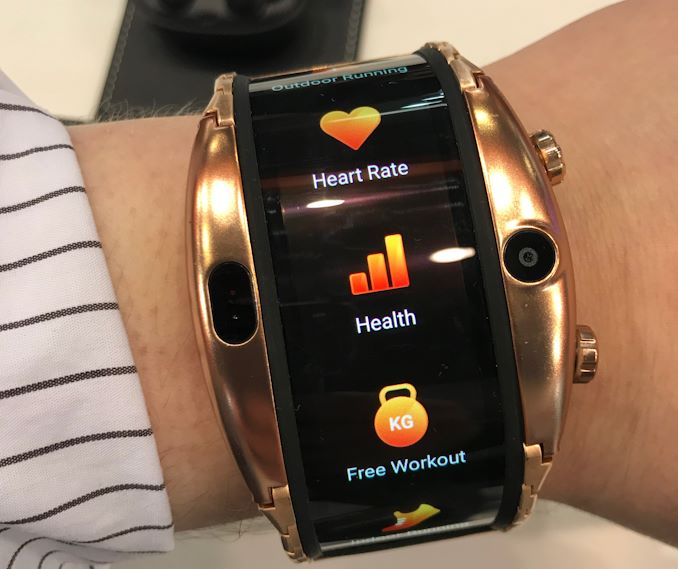
ZTE plans to start selling its Nubia Alpha this April. The eSIM/WWAN-enabled version will initially only be available in China, whereas the company will offer Wi-Fi/Bluetooth-only versions in other countries for around 450 EUR. Later on in the third quarter ZTE will offer the eSIM version globally, but its pricing is unknown at this point.
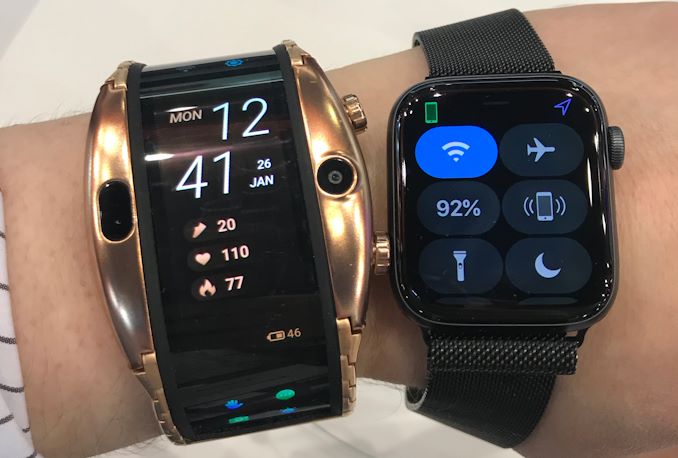
Related Reading:
- Nubia at MWC 2019: Wearable OLED Smartphone Coming to a Wrist Near You
- Dive In: Catalyst Has Apple Watch Protection for Up to 100 Meters
- Tag Heuer Connected Modular 45: Atom Z3400, Android Wear 2.0, Starts at $1650
- Nubia X: a Dual-Display Smartphone with No Selfie Camera
More...
-
03-05-19, 10:23 AM #9230
Anandtech: Sizing Up The 5G Modem Market: Qualcomm, Intel, Huawei, Samsung, UniSOC, a
It will be very difficult to look at mobile connectivity news in 2019 and not see buzzwords like ‘5G’ being used everywhere. Everyone wants to talk big about 5G, however the core of the technology relies on end-points being able to pick up the signal, whether it is the ‘Sub 6 GHz’ flavor of 5G or the mmWave flavor. For now, six companies have put their hat into the ring with confirmed announcements of consumer oriented 5G modems, set to be ready either in 2019 or 2020. We’re going to go through them all.
More...
Thread Information
Users Browsing this Thread
There are currently 8 users browsing this thread. (0 members and 8 guests)




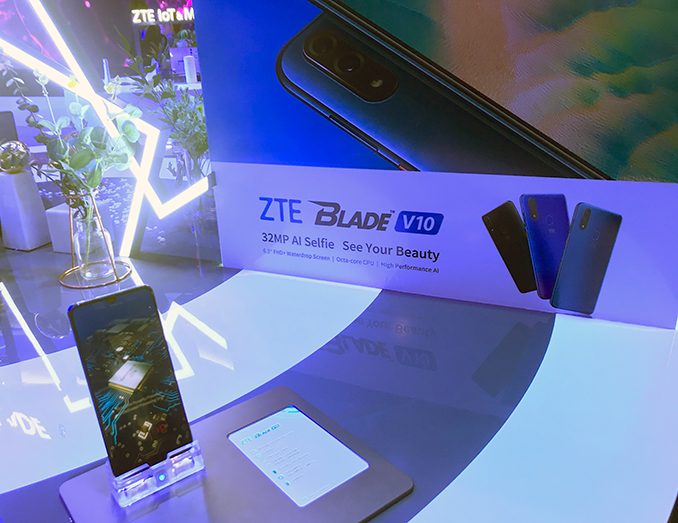
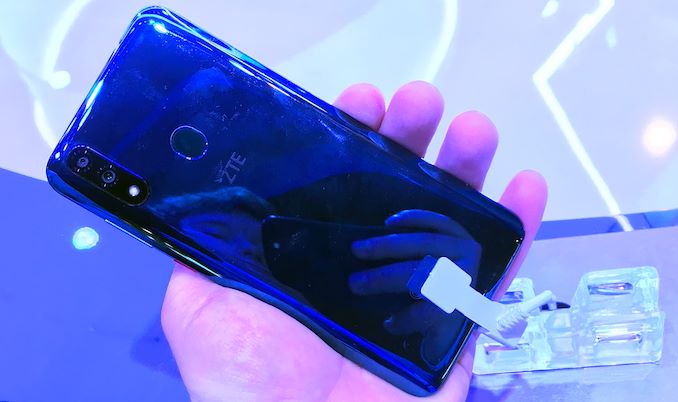

 Quote
Quote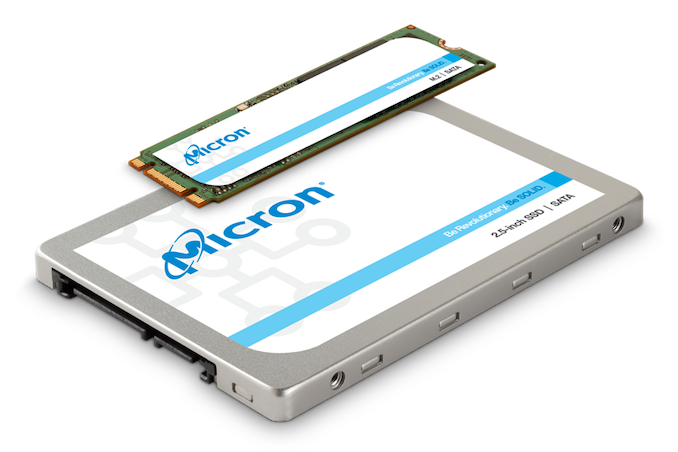
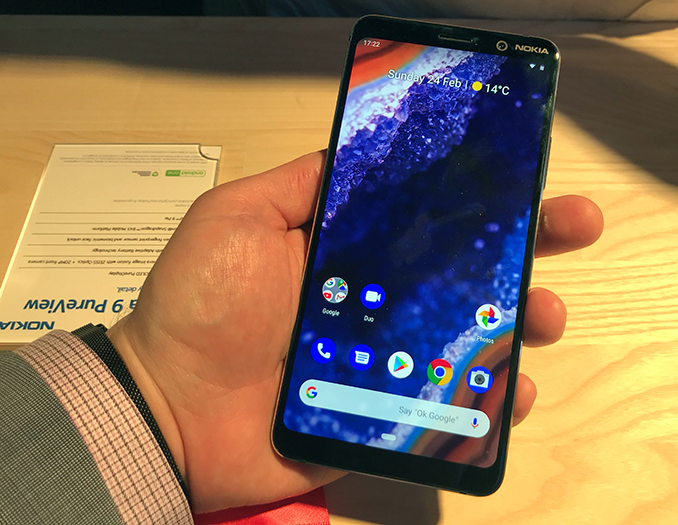
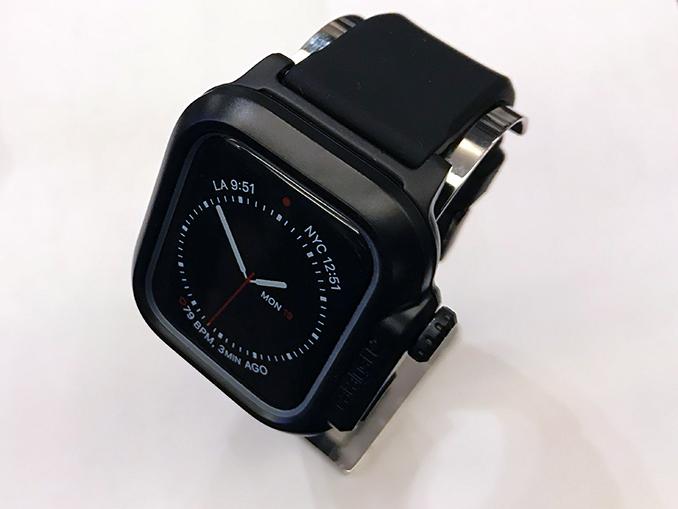

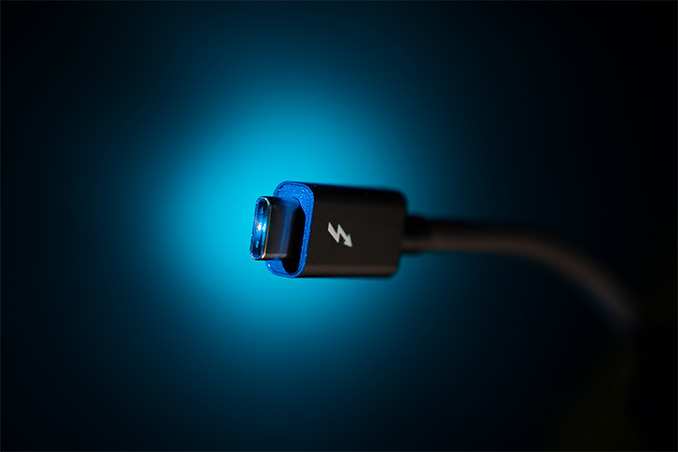
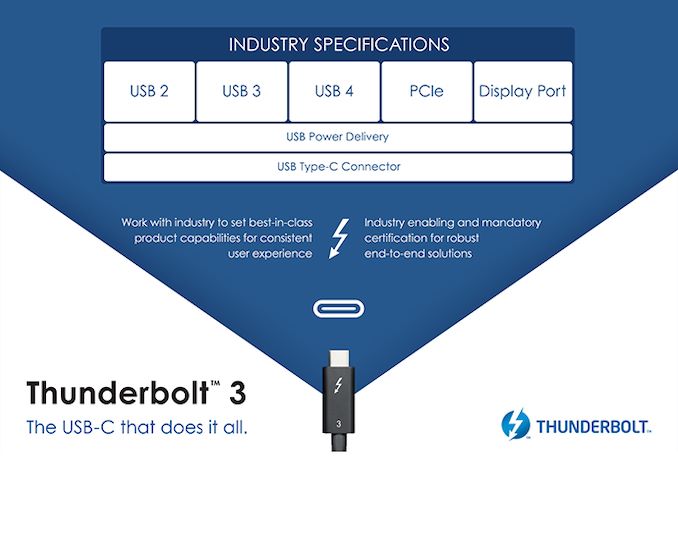


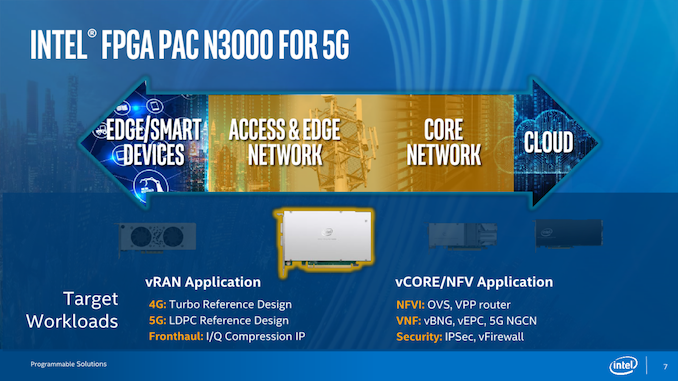
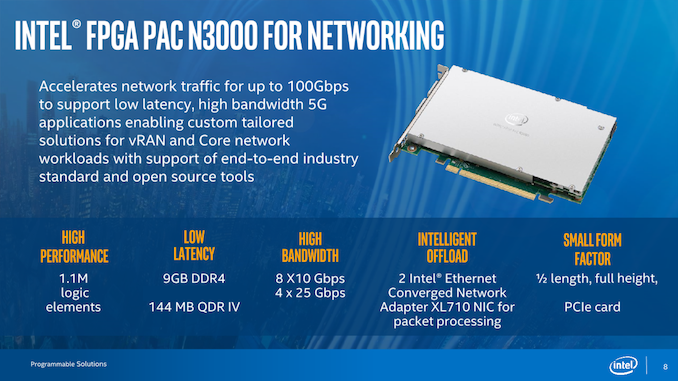
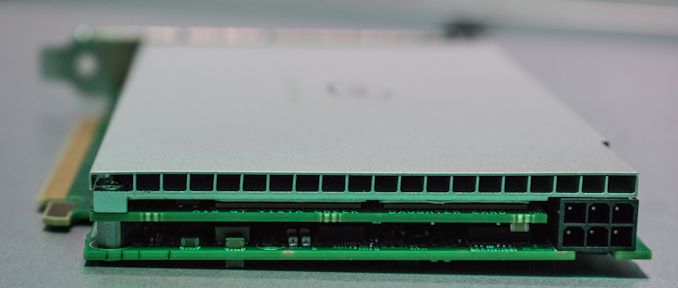
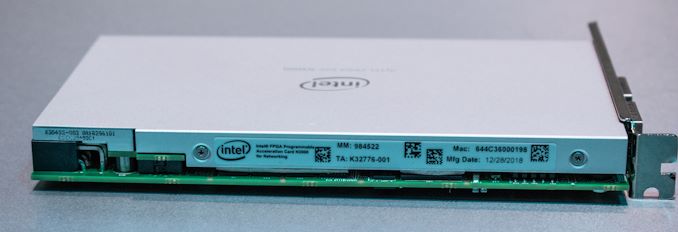
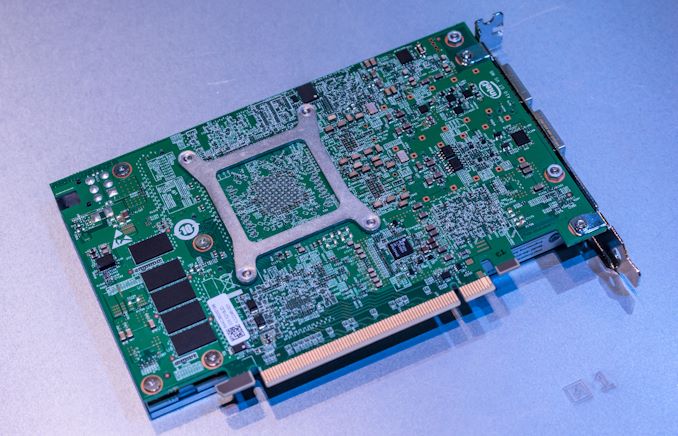
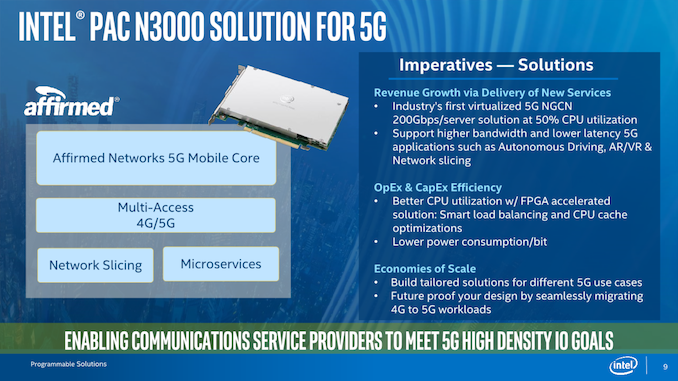
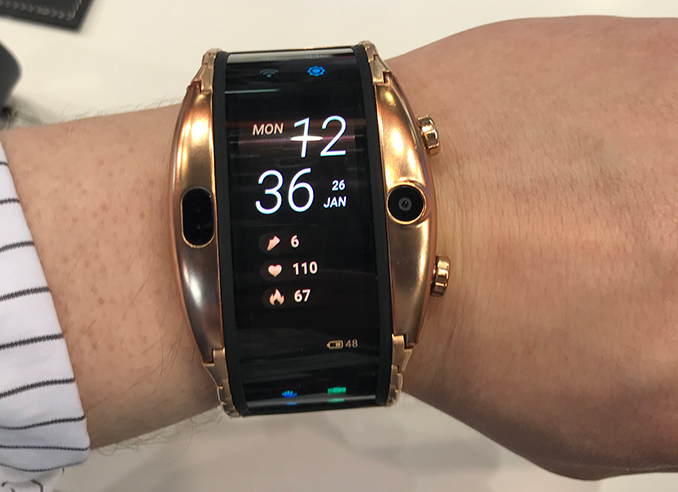
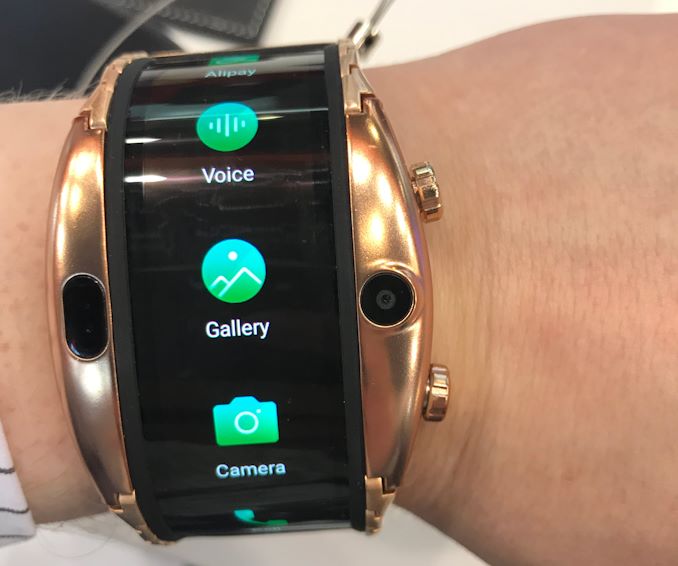
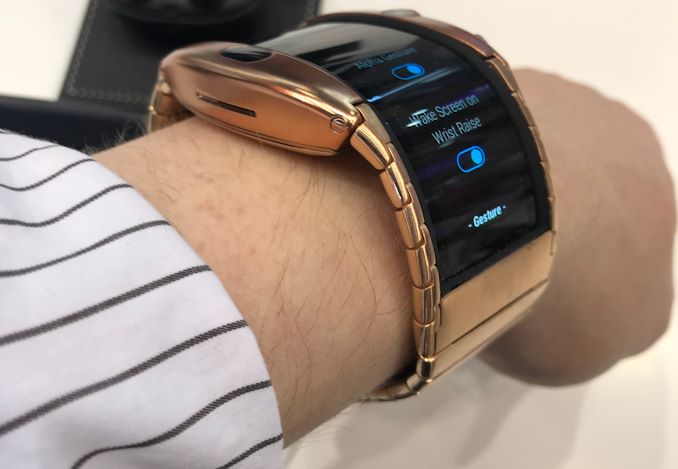
















Bookmarks